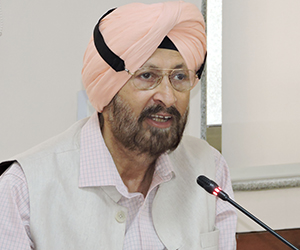The Pakistan army’s continuing efforts to arm the 60-km Hatf-9 (Nasr) short-range ballistic missile (SRBM) with nuclear warheads will adversely impact deterrence stability on the Indian subcontinent as tactical nuclear weapons are inherently destabilising and invariably escalatory. The Nasr missile was first tested in April 2011 and then again in May 2012 and is reported to be a replica of the Chinese M-20.
Even though 50,000 to 60,000 nuclear warheads were produced since the arguably senseless bombing of Hiroshima and Nagasaki in 1945, some basic human survival instinct “repeatedly stayed the finger that might have pushed the button.” The world’s abhorrence for nuclear weapons is now so widespread and deep-rooted that even if battlefield or tactical nuclear weapons (TNWs) were to be used against a purely military target in a conflict in future, the effect would be strategic. In fact, the impact would be geo-strategic as the explosion of even a single nuclear weapon anywhere on earth would be one too many. The employment of nuclear weapons as useful weapons of war was always doubtful; it is even more questionable today. Given the widespread abhorrence of nuclear weapons, the Nuclear Rubicon cannot be lightly crossed now and whichever nation decides to cross it will have to bear the consequences.
According to William R. Van Cleave and S. T. Cohen, “… the term tactical nuclear weapons in the closest approximation refers to battlefield nuclear weapons, for battlefield use, and with deployment ranges and yields consistent with such use and confined essentially in each respect to the area of localised military operations.” Some air-dropped nuclear glide bombs, carried by fighter-bombers, have been known to have yields of over one megaton. Parts of NATO’s erstwhile TNW forces, including Pershing missiles, were on constant readiness alert as part of the Quick Reaction Alert force. The line dividing tactical (including theatre) and strategic nuclear weapons is rather blurred. While a strategic strike can be conducted with weapons of low yield, a tactical strike can be effected with virtually any class of nuclear weapons – though the results achieved may not be commensurate with the effort put in. For example, hitting a forward military airfield with an ICBM would be a gross overkill and would result in extremely high collateral damage. In fact, the phrase ‘tactical use of nuclear weapons’ would convey a more accurate sense of the intended use rather than ‘use of tactical nuclear weapons’.
In the public perception, the most popular TNWs have been the 8 inch (203 mm) M-110 and the 155 mm M-109 atomic artillery weapons, and the Lance and Honest John SRBMs. At the upper end of the range scale were the Pershing missiles with a range of 160 to 835 km. These were intermediate range theatre SRBMs. The erstwhile Soviet and Warsaw Pact forces had their own corresponding TNWs. Among the better known ones were the FROG and Scud series of rockets and missiles. In addition, there was a category of weapons known as ‘mini-nukes’. These had yields from 0.05 to 0.5 kilotons. TNWs, particularly those of the US and its NATO allies, were nuclear warfighting weapons and formed an important part of NATO’s strategy of flexible response or ‘first use’ policy. These weapons were among the first that would have been used in the early stages of a NATO-Warsaw Pact war.
During the Cold War, the proponents of TNWs justified their requirement on the following grounds: they deter the use of TNWs by the enemy; they provide flexible response over the whole range of possible military threats; they offer nuclear military options below the strategic level; they help to defeat large-scale conventional attacks; and, they serve the political purpose of demonstrating commitment to the allies. The opponents of TNWs asserted that these ‘more usable’ weapons would lower the nuclear threshold and make nuclear use more likely. Fears of collateral damage in the extensively populated and developed NATO heartland spurred European opposition to TNWs. Many European political and military leaders convincingly argued that NATO would be better off without TNWs. Alain Enthoven wrote: “Tactical nuclear weapons cannot defend Western Europe; they can only destroy it… there is no such thing as tactical nuclear war in the sense of sustained, purposive military operations…”
There are other compelling reasons too for leaving TNWs out of the nuclear arsenal. Firstly, these are extremely complex weapons (particularly sub-kiloton mini-nukes, because of the precision required in engineering) and are difficult and expensive to manufacture and support technically. Inducting them into service even in small numbers would considerably raise the budget of the strategic forces. Secondly, the command and control of TNWs needs to be decentralised at some point during war to enable their timely employment. Extremely tight control would make their possession redundant and degrade their deterrence value. Decentralised control would run the risk of their premature and even unauthorised use – Kissinger’s ‘mad major syndrome’. Thirdly, since the launchers must move frequently to avoid being targeted, dispersed storage and frequent transportation of TNWs under field conditions, increases the risk of accidents. Lastly, the employment of conventional artillery and air-to-ground precision weapons by the enemy may damage or destroy stored nuclear warheads.
India has correctly opted not to go down the TNW route, but Pakistan has chosen to acquire these dangerous weapons. According to Pakistani analysts, the Htf-9 (Nasr) missile is their answer to India’s Cold Start doctrine as the use of TNWs will stop India’s armoured spearheads advancing into Pakistan in their tracks. They miss the centrality of India’s no first use doctrine completely: even one nuclear strike – whether in India or against Indian forces – will invite ‘massive punitive retaliation’, which Pakistan can ill afford.
It is now universally accepted that nuclear weapons are political weapons and are not weapons of ‘warfighting’. By extension, TNWs now have no role to play in combat. The international community must come together to stop Pakistan’s dangerous quest to acquire these destabilising weapons.
Published Date: 8th October 2012










Post new comment